Peter Dornauf – 30 June, 2014
The frame, in the world of art, signifies something special about the visual field one is about to enter. It concentrates the focus and valorises the subject that exists within its borders, making the forms in the art work inherently important, signalling for the viewer that they are on the point of encountering a unique aesthetic experience. It directs the gaze as it points to the place where ordinary space ends and represented space begins.
The use of ordinary commonplace materials was one of the Dadaist tactics and this tradition has been given a new twist in the works of two artists currently showing at Pilot Gallery in Hamilton. Scarlett Cibilich and Joseph Nerney source their modest and unassuming ingredients from your local DIY store, not so much for any nihilistic cause but rather for their interest in mark making. They do, however, have their critical reasons for such a ploy.
This show, entitled Thick Stretch, is one that is essentially self-reflexive; focused on art about art. The manoeuvre they take is to draw attention to the frame and the particular frames they use are everyday unexceptional materials as are the grounds on which they choose to work their subject and medium with an emphasis on the production of novel forms in the creation of marks.
The frame, in the world of art, signifies something special about the visual field one is about to enter. It concentrates the focus and valorises the subject that exists within its borders, making the forms in the art work inherently important, signalling for the viewer that they are on the point of encountering a unique aesthetic experience. The frame thus assumes symbolic proportion, helping in fact to create the art, generating a magic zone of distinction and providing a physical marker that excludes while it includes. It directs the gaze as it points to the place where ordinary space ends and represented space begins. The boundaries it sets thus become the parameters of a scene that nominate an engagement with the elevated, thereby constructing a ‘superior’ window on the world.
To rework theorist George Dickie’s definition of art; an object can only become art in the context of a frame, that is, a literal frame around the ‘painting’ itself. Of course the institution of the gallery is another frame which also provides a similar validation.
Cibilich and Nerney challenge both these structures/conventions. In her work Stack, for example, Cibilich uses recycled wood for her frame, the short lengths of which she has had to join together to make up a complete span. The joins themselves have not been disguised but remain palpable and thus the frame exists while at the same time being subverted. The ground for the small work itself is simply a piece of yellow card painted on the reverse side with roughly configured light blue squares that form a loose grid pattern. Looking closely at the patches of blue, one sees that they are painted over a series of stamped texts, the words of which refer to the nature and materiality of the card itself.
Economy of materials as well as a certain truthfulness to materials are hereby deliberately employed in a variety of ways. Simultaneously the mark is signified, drawn attention to, and obscured - all in the same gesture.
All the works in the show are ‘framed’ and Cibilich again highlights the contested premise in a work simply called Enamel Painting, in which a piece of glass (the ground) sporting globules of yellow paint, incorporates part of a picture frame into the work itself, a right-angled mitred form that straddles the painting. The disrupted half-frame in its unorthodox position reminds one of the found constructed works of Kurt Schwitters, the Hanover Dadaist, and also the work of Baroness Elsa von Freytag-Loringhoven who played with the question of the nature and function of art in her work, satirically called God. It also used as a base - for the ‘sculpture’ (a cast iron plumbing trap) - an ordinary wooden mitre box.
Nerney, in a small untitled work, on hardboard, uses builder’s gap-filler foam to create a rough outer frame and then proceeds to repeat the framework with a painted border. He then duplicates that with a third framing device using construction adhesive (No-More-Nails) that tracks down and across a line of copper nail heads arranged in the form of a rectangle. Inside that innermost frame are dashes of coloured paint, squeezed straight from the tube, that might resemble the notations on a Cy Twombly canvas. The use of humble materials to “over-frame” the piece interrogates the make-up of the subject and all the overblown rhetoric associated with the sometime pretentious business of art, while simultaneously playing with the various and myriad possibilities of marking marks.
A second work by Nerney pushes these issues further when he attaches a work on paper to the gallery wall by using a combination of builders plaster over reinforcing mesh tape that acts as a frame. The scored graphite marks on the paper are simply random scribbles that reference the use of a builder’s pencil. The mark of a tradesman and mark of an artist thus become conflated. But the work that challenges most on several levels at once are his slabs of jib board that block out both windows of the gallery. The unfinished plastered jib faces into the gallery space while the frame constructed of four-by-twos face out into the street. Here the artist challenges the framing nature of the gallery as an institution and in his use of basic materials, another theme prominent in the show, raises the issue of art and money, art as commodity, the investment racket in tow with capitalism that blunts all the edges of art in its role as critic of society.
Ironically (and or fortuitously) on the back of the jib facing the street are a series of stamped texts that advertise the worthiness of the product. “Proudly made in New Zealand”. “Less energy so better on the environment”. “Lightness and flexibility”. “Strong consistent quality finish”. “More rigid, less sag”. Any and all of these statements could be read emblematically and paradoxically in the context of the show itself.
Nerney also in separate works uses plaster troweled on hardboard in de Kooning-like impasto expressionist gestures, making marks, smears and smudges one might find on any building job, while Cibilich, on broken glass held together with adhesive tape, does an elegant layering fabrication of white and grey paint where roughness and exquisite delicacy of scratching, streaking and staining co-mingle. The use of lowly and even compromised materials to produce surprising beauty is an impressive feat.
This is a clever, astute and engaging show where art theories, art skills in marking and trade skills play off against each other in a creative hybrid that takes on a kind of Punk aesthetic while critiquing the art world that they themselves work in.
Peter Dornauf
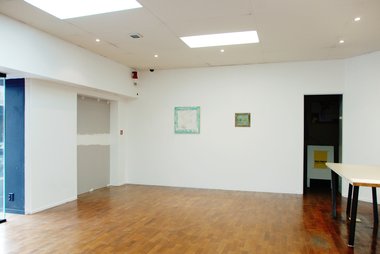
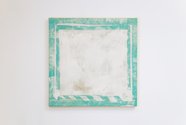
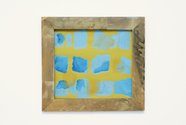

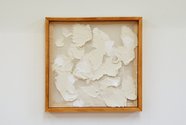
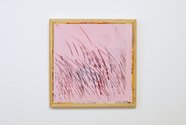
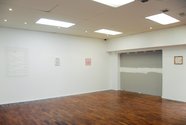

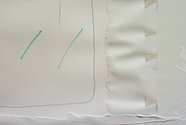
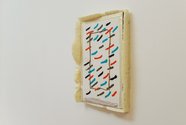
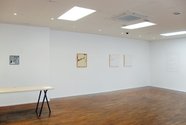
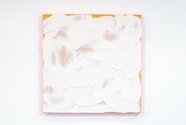


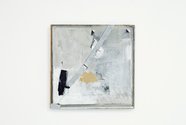
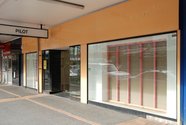
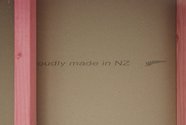
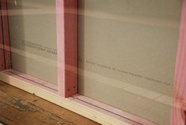
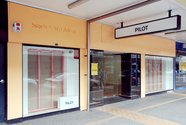
 Two Rooms presents a program of residencies and projects
Two Rooms presents a program of residencies and projects Advertising in this column
Advertising in this column



This Discussion has 0 comments.
Comment
Participate
Register to Participate.
Sign in
Sign in to an existing account.